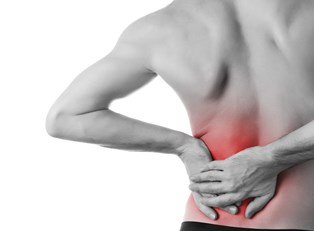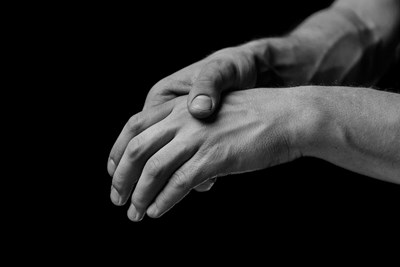Muscle pain, or "myalgia" is a symptom of a larger condition or disease. This type of pain is usually localized, affecting just one or more muscles or parts of the body. Almost everyone experiences sore, aching muscles now and then. Muscle pain can range from mild to excruciating, and though it most often goes away after a few days, some muscle pain can persist for months. Muscle pain can develop almost anywhere in the body, including the neck, back, legs and hands. Muscle pain one feels throughout the body is called, "systemic muscle pain". The most common causes of muscle pain are tension, stress, overuse and minor injuries.
The muscle pain location, duration and level of intensity relies greatly on what it causing the pain. Outside of trauma, the most common muscle pain causes include chronic exertional compartment syndrome, viral infections, chronic fatigue syndrome, staph infections, claudications, Rocky Mountain spotted fever, dermatomyositis, post-polio syndrome, fibromyalgia, influenza (flu), lupus, lyme disease, myfascial pain syndrome, medications (especially statins), muscle cramp and muscle strain or rupture. The risk factors of muscle pain have mainly to do with lifestyle, including exercise regimen and occupation. Repetitive strain injury (RSI) causes muscle pain through repetitive tasks, forceful exertions, vibrations, or sustained awkward positions.
Muscle Pain Medical Treatment
Muscle pain from severe injuries or systemic disease is often serious and requires medical care. One should schedule an office visit if experiencing muscle pain that lasts longer than a week, signs of infection, such as redness and swelling, around a sore muscle, or poor circulation and muscle pain in the legs. One should call a doctor immediately if experiencing sudden, severe muscle pain that doesn�t go away or that recurs during exercise, have a tick bite or rash. Emergency care is required for difficulty breathing or dizziness, extreme muscle weakness, or a high fever and stiff neck. A doctor will ask about muscle pain symptoms as well as other symptoms, medical history, and possibly assign a questionnaire to assess the pain�s intensity. A physical exam will also likely be required as well as labs (blood tests). Different types of manual therapy, or mobilization, may be used to treat those with spinal alignment problems and acute muscle pain.
Those with disorders, such as fibromyalgia, medications may be prescribed to increase with body's serotonin and norepinephrine levels. For more severe pain, anesthetics or anti-inflammatory medications may be injected in or around the painful sites. Physical or occupational therapy may also be required to cope and treat muscle pain.
Muscle Pain Lifestyle and Home Treatment
Most minor muscle pain is resolved through self-care and home treatment. Whether a conditioned athlete or a novice, one can become sore after exercise, especially if the workout lasts long than normal, is more intense or uses different muscles. The type of muscle pain, called delayed-onset muscle soreness, usually surfaces twelve to forty-eight hours after the activity and will go away on its own in a few days to a week. The best remedy is usually to keep exercising at a moderate level. Stretching won't relieve sore muscles, though some find that massage helps. Muscle pain occurring during an activity usually signals a "pulled" or strained muscle. Even severe strains, which can take months to completely heal, usually respond well to home therapy known as "R.I.C.E" (Rest, Ice, Compression, Elevation). For best results, R.I.C.E. should begin within forty-eight hours of an injury. Rest: Take a break from normal activities and refrain from physical exertion.
Ice: Place an ice pack or bag of frozen peas on the sore area for fifteen to twenty minutes, three times a day. Compression: Use a compression bandage to reduce swelling.
Elevation: Elevate the sore area to help reduce swelling. Taking breaks and stretching muscles throughout the day can help prevent muscle pain down the road.



